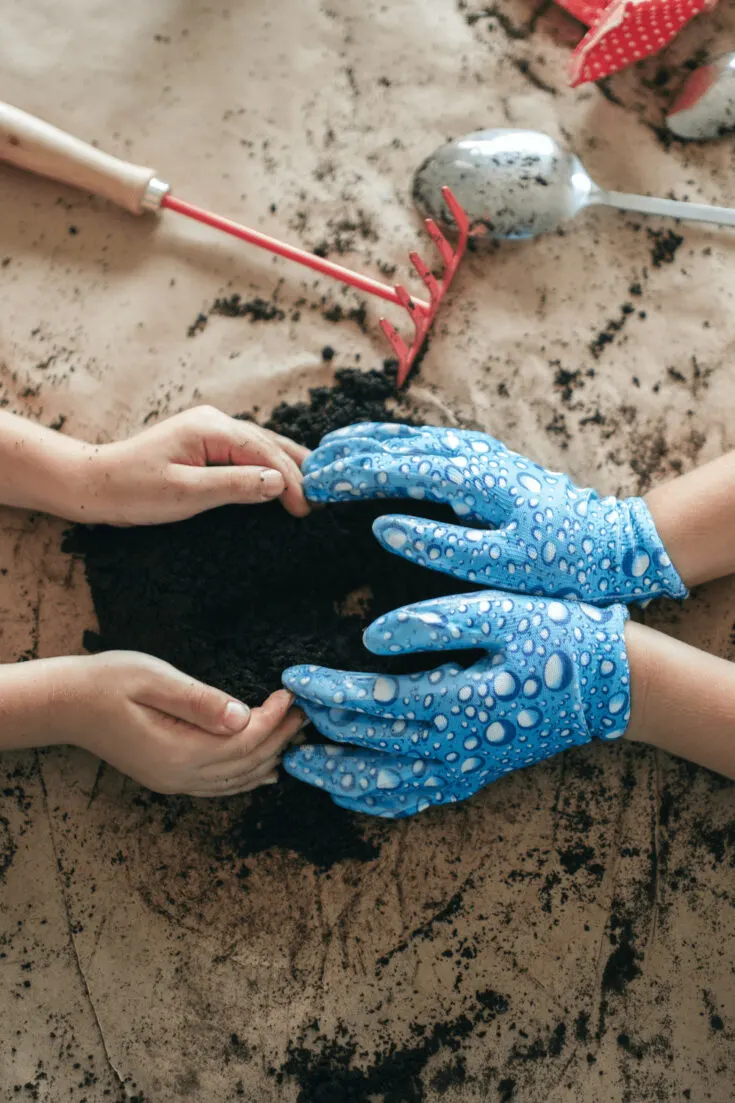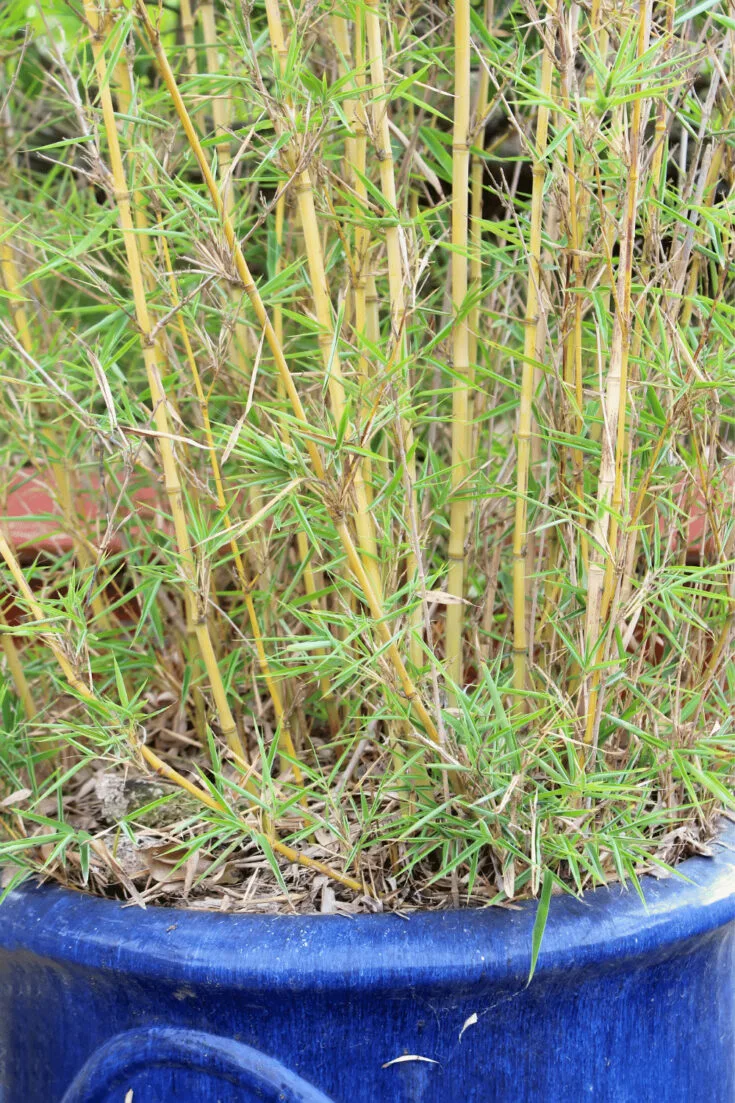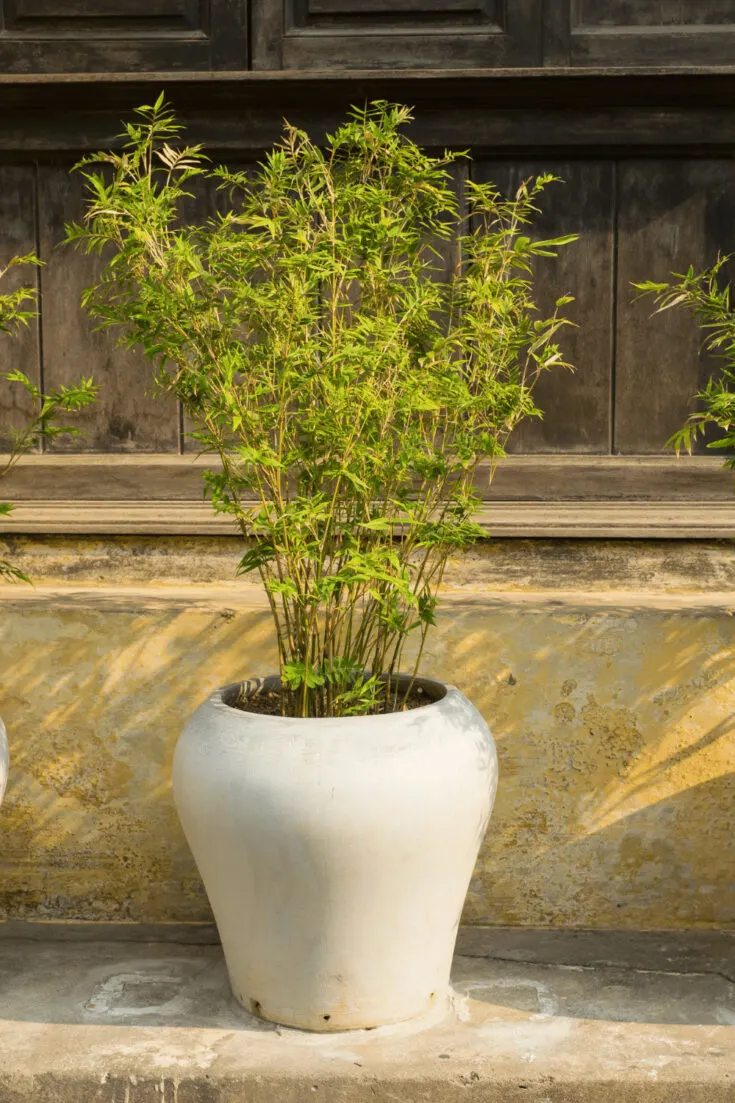How to Repot Bamboo?
Bamboo is known for its beauty and exoticism, but did you also know that it is one of the fastest-growing plants in the world?
The University of Maryland describes bamboo as a plant demonstrating vigorous growth. No wonder multiple running bamboo species are seen as an invasive plant in the US.
While versatile, vivacious bamboo is low-maintenance, the sheer veracity with which it grows means bamboo needs to be repotted, mainly to avoid becoming root-bound.
Signs that a bamboo plant is outgrowing its container include thinner stalks, lighter leaves, and fewer shoots than normal.
Table of Contents
How to Repot Bamboo?
To repot bamboo thoroughly water a bamboo plant 1 day before repotting it. Then, prepare a clean and spacious workspace either indoors or outside. Gently remove the plant by tipping it on its side and lightly sliding it out. Use a screwdriver or chopstick to lightly loosen the roots. Finally, repot the bamboo in good quality, well-draining soil, and mulch to preserve moisture.

How to Repot Bamboo
Why Repot Bamboo
As mentioned, bamboo plants grow at dizzying rates, and for this reason, many gardeners like to keep them restricted to containers to keep them structured and avoid them spreading too rampantly.
The issue with pots and containers, however, is that bamboo can quickly become rootbound. This prevents the proper spread of nutrients to the rest of the plant and can be fatal.
Therefore, it is essential that bamboo is repotted frequently, or when it starts to show signs that it needs more room. Select a pot at least double the size of the original, with adequate drainage holes.
How to Repot Bamboo – Step By Step
Step1: Preparing my Workspace for Repotting
When working with plants, it is good to have a clean workspace where there is no risk of bacteria or disease and no chance of the plant and its roots getting damaged.
If you are working indoors, lay down a newspaper or a plastic sheet to prevent soil from straying all over the show.
If you are working outdoors with larger plants, you may also want to work with a catchment container to prevent spilling ground and mess.
Always ensure your tools, such as trowels and shears, are clean and sterilized.

Prepare the workstation to repot bamboo
Step2: Remove Bamboo Plant from its Pot
In a word, carefully. Bamboo is exceptionally hardy, but root damage is root damage and should be avoided no matter what plant you are working with.
Prepare ahead of time by watering the bamboo plant the day before repotting. Aside from feeling healthier, the plant will also slide from its container more easily.
When you are ready to remove it from its current container, tip it on its side and slowly, gently wiggle it out onto your work surface.
If it is stubborn in its pot, loosen the edges with a thin stick or a butter knife.
Once the plant is out of its pot, you can start to work the roots to loosen them with a chopstick, screwdriver, or similar.
This way, when the bamboo is homed in its new pot, it will have a simpler time spreading out its roots and adjusting to its new space.

Remove the bamboo from its pot using a stick or butter knife to loosen the soil
Step3: Repotting Bamboo in its New Container
Once bamboo plants are prepared for their new home, the repotting process can be completed.
Prepare the container by filling it one-third of the way with a layer of good-quality, well-draining potting soil.
I like to mix one-part compost with three-parts potting soil for this layer to give my bamboo a little kick of added nutrients.
Next, gently place the bamboo plant in the pot, spreading its roots out as evenly as possible. Then, add soil around the bamboo.
Do not compact the ground too much, as this can hinder water flow to the plant’s roots.
To encourage drainage and retain moisture, it’s advisable to add a layer of mulch or moss above the soil. After this, the repotting process is complete, and you can give your bamboo a generous dose of water.
Repotted bamboo plants should be placed in bright but indirect light and monitored for distress for a week or two.

Repot the bamboo in its new container by using well-draining soil
Frequently Asked Questions about How to Repot Bamboo
Why is my bamboo plant losing leaves?
After the stress of repotting, it is normal for a bamboo plant to lose a few leaves, and it will stop once it has become used to its new pot. Make sure the plant is kept evenly moist but not overwatered by inserting your finger into the soil. If it is soggy, restrict your watering and resume only once the top layer of soil has dried out.
Should I fertilize my bamboo?
Fertilizing bamboo will only help it to reach its full potential. You can use chemical fertilizers targeted at grass and lawn species or organic fertilizers like compost or manure. Either way, try to restrict feeding to twice per year, once in midsummer and once at the beginning of spring.
When is the best time to repot my bamboo?
Generally speaking, if you are careful not to damage the plant, bamboo can be repotted at any time during the year.
Conclusion About How to Repot Bamboo
Bamboo is a much-loved plant due to its tenacity and versatility. These hardy beauties grow well and fast, and aside from being aesthetically pleasing, they work beautifully as shelter or shade in landscapes.
If one takes care to repot bamboo plants frequently, they can continue to grow and thrive season after season.

Daniel has been a plant enthusiast for over 20 years. He owns hundreds of houseplants and prepares for the chili growing seasons yearly with great anticipation. His favorite plants are plant species in the Araceae family, such as Monstera, Philodendron, and Anthurium. He also loves gardening and is growing hot peppers, tomatoes, and many more vegetables.


